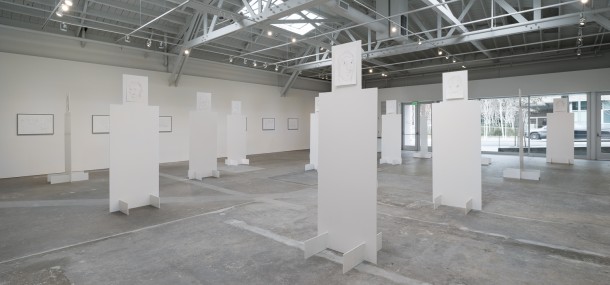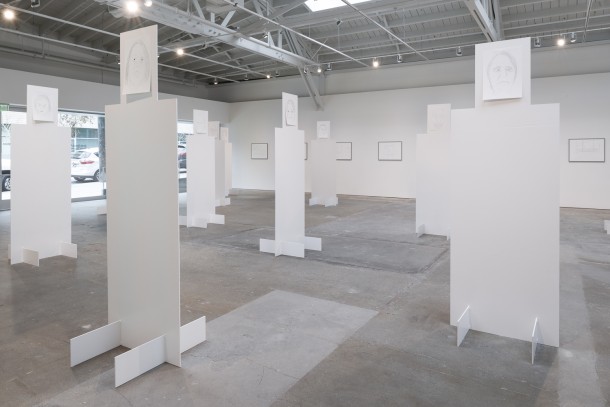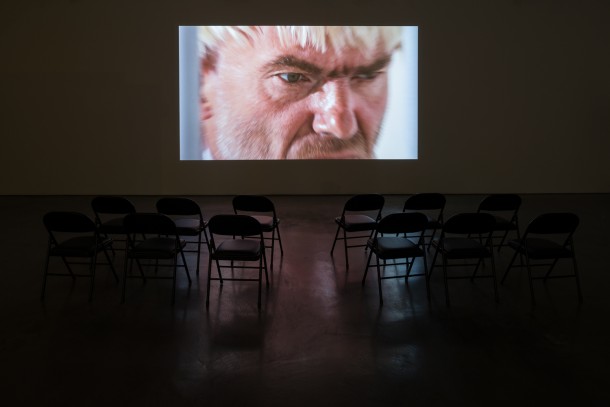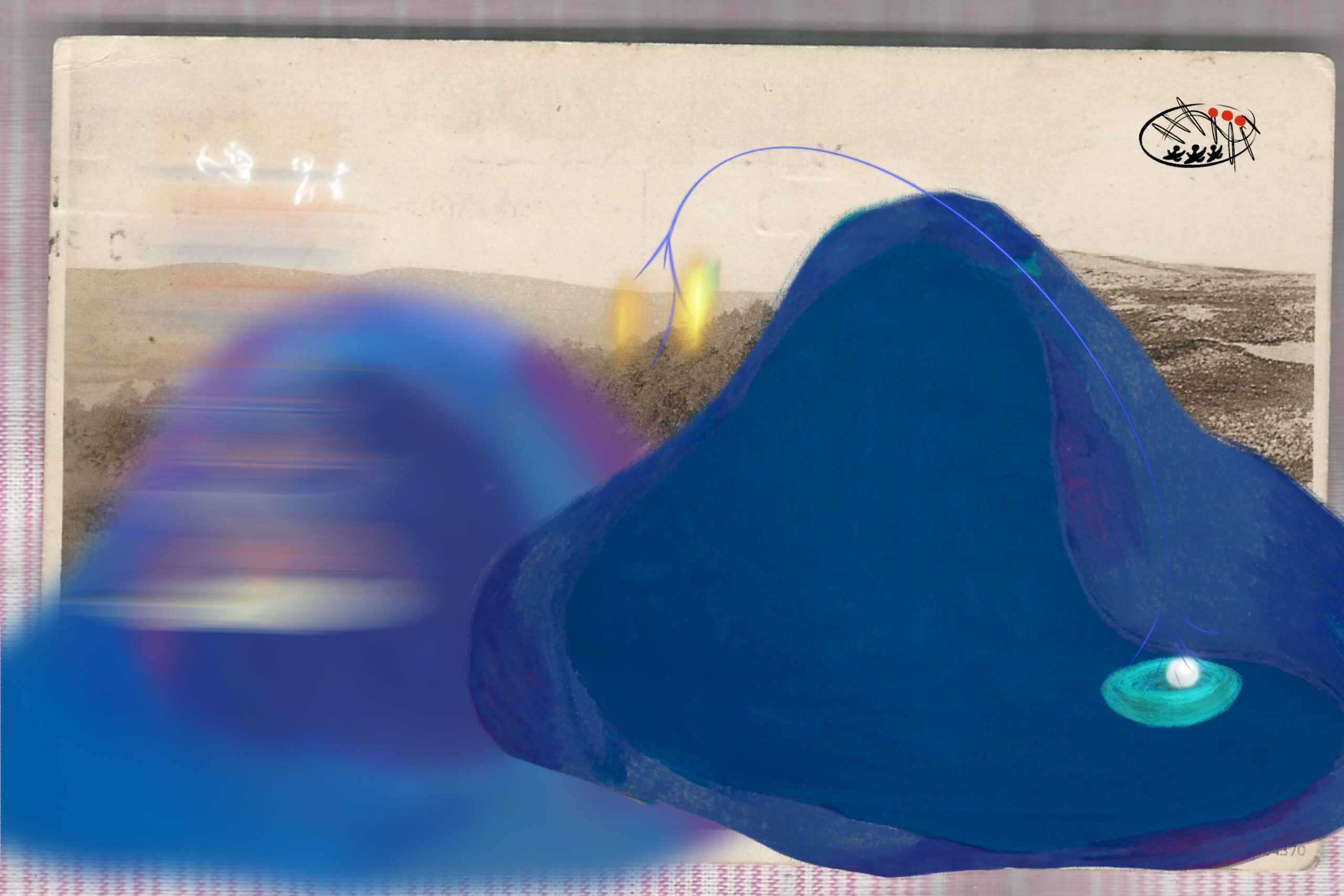HIDING IN PLAIN SIGHT: DE GRUYTER AND THYS
| 2015年03月09日

Courtesy the Wattis Institute
WEB EXCLUSIVE
Our modern world is fast. The connections we make are immediate yet superficial: texting, social media, and mass media swirl past us to until we are left over-saturated by information, much of which is useless. Amidst all of this, hiding in plain sight, are the evils of corruption, poverty, and the complacency we practice to endure it. The Belgian artistic duo of Jos de Gruyter and Harald Thys are well aware of this form of modernity and have placed it at the center of the works in “Tram 3,” on display at the Wattis Institute in San Francisco. Stripping bare the world we live in, minimalizing and monumentalizing it to the point where such aforementioned evils are unavoidable, de Gruyter and Thys leave us to confront our apathy and the dangers it presents.

Courtesy the Wattis Institute
Upon entering the Wattis Institute, the viewer is met by a forest of evenly placed forms. White Elements (2015), with its flat, white, nine-feet-tall and eight-millimeters-thick steel constructions, consists of towering beings that oversimplify the human form, presenting it as hulking, monumental, unapproachable. Atop each one is pasted a single sheet of paper, upon which cursory sketches of individuals are scrawled, comic in their rendering and forgetful by nature. With their sheer numbers, lack of texture, and austere presence, they become a meditation on alienation. What the work omits and the viewer may fail to recognize, however, is that each face belongs to a serial killer, mass murderer, criminal, or corrupt politician, leaving the viewer to distinguish these forms at face value. White Elements depicts caricatured white people, and for de Gruyter and Thys, perhaps this is all they expect us to see.
In Public Transport (2013), 25 pencil sketches depict images of urban trams and their passengers. The images are superficial, the trains appearing as passing figments and the commuters as mere participants in this mundane act—all are locked in their own worlds, often faceless, only present in form. Like White Elements, Public Transport mirrors how modernity and the urban environment have shaped our psychology and patterns of interrelation. As urban sociologist Alan S. Berger theorizes in The City: Urban Communities and Their Problems (1978), the overstimulation of the modern metropolis has led to a radical shift in intellectual processes, reducing the complexity of daily interactions to their bare minimums in order to categorize them by role and function. As a result, one loses depth and diversity of meaning in exchange for a summary of characterizations and classifications. “Tram 3” may simply refer to the public transportation line in Antwerp used to ferry the urban poor from one impoverished neighborhood to another, or conversely, it may also hint at locals’ slang for rampant political corruption. It is in this tendency to oversimplify one’s surroundings and personal connections that apathy and complacency are born.

Courtesy the Wattis Institute
The final piece in the show, the video Die Aap van Bloemfontein [The Ape from Bloemfontein] (2014), is yet another vision of silence and inaction, this time caught within the confines of an absurdist play. The actors remain speechless and still throughout the performance, rarely touching one another, yet displaying an ever-present sense of potent vulnerability. A booming voice speaking Afrikaans weaves a surreal narrative where the invisible protagonist, Jaap the chicken, is taken through a multitude of transformations, none of which are visually realized. The actors remain frozen, as if by fear, left paralyzed and useless while the story continues to mutate.
The players of Die Aap, and arguably all the figures presented in “Tram 3” typify what Dutch cyberneticist Felix Geyer hypothesizes in his 2001 commentary Alienation, Sociology of. Geyer writes, “The average person is increasingly confronted, on a daily basis, with an often bewildering and overly complex environment, which promotes attitudes of political apathy, often politically dangerous oversimplification of complex political issues, and equally dysfunctional withdrawal from wider social involvements.” In the world we live in, with its instant communication, efficient transit, the din of the city, and the cries of the abused, de Gruyter and Thys’ work offer a silent, powerless response, a mirror to ourselves as we faced by our own mutations as a society transformed by technology and the growing presence of the urban landscape.
“Jos de Gruyter & Harald Thys: Tram 3” is at the Wattis Institute for Contemporary Arts, San Francisco, until April 18.


